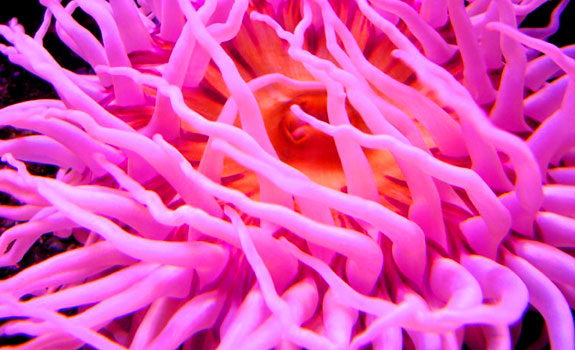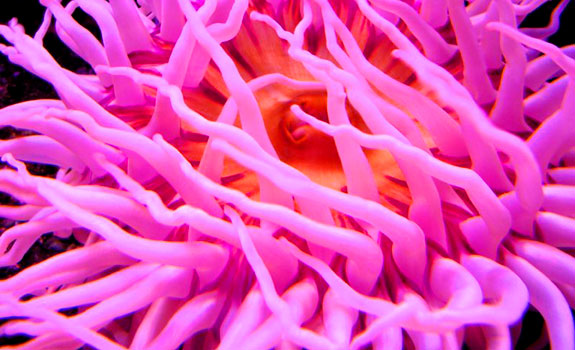LSAT Logical Reasoning Tips: June 09, LR2, #24 –or– Can Sea Anemones Really Feel?
- by
- Jul 27, 2009
- Advice on Logical Reasoning, LSAT
- Reviewed by: Matt Riley


LSAT Logical Reasoning Tips: June 09, LR2, #24 –or– Can Sea Anemones Really Feel?
Here we go again. As I stated in my last post, I am walking through some of the more challenging and important Logical Reasoning questions from the June 2009 LSAT. Last time we explored a causal question regarding the impact of harsh speed limits on accident rates. Now we dive into a different subject matter and a different question type. I chose this question because it is a perfect illustration of a question that can be very frustrating for students. However, once you know how to approach a question like this, you can quickly bring it to its knees.
So here we go. (Note: once again, the question has been slightly altered due to licensing issues.)
June 2009, LR2, #24
First things first, we need to read the prompt and figure out what the hell they want us to do.
- The argument’s conclusion follows logically if which one of the following is assumed?
The strategy that you should use on a question such as this revolves around understanding exactly what is being asked. Many people will make the mistake of calling this an Assumption question. This is a terrible mistake. The LSAT actually requires you to spot different types of assumptions. So just going for any assumption could lead you to an incorrect answer choice. Here, they actually want an assumption that would function to make the conclusion of the argument follow logically. That is a lot to ask of an answer choice.
As an aside, this is also a pretty dirty trick that is being played. Most people think of an assumption as something that the argument assumes is true. However, this question does not work like that at all. Rather, this question requires an answer choice that, if true, allows the conclusion to follow logically from the premises. That is why some people call this a Justification question. At Blueprint, we call it a Sufficient question. It is best not to think of this as an assumption question at all. Rather, this is like the Barry Bonds on steroids version of a Strengthen question. You are not just asked to strengthen the question, but to go all the way to make it a valid argument.
Now for the stimulus:
- It is widely believed that sea anemones—small, primitive sea animals—do not have hearts. Each sea anemone has a contracting vessel, but this vessel is considered an artery rather than a heart. However, this vessel is indeed a heart. After all, it strongly resembles the structure of the heart of certain other sea animals. Moreover, the muscular contractions in the sea anemone’s vessel closely resemble the muscular contractions of other animals’ hearts.
Ouch. Now that is not an easy one to break apart. First, some preliminary issues. For those of you who do not have much experience with sea anemones, you can take a look here to get some info. Not the cutest little guys, but maybe they do have a heart after all.
Now, back to our question. Well, actually we have something bigger to discuss. On a question like this, there is a strategy that you can employ which will make things very easy on you. Essentially what you need to do is bridge the gap from the premises to the conclusion. To show you how this works, let us consider a different argument for a moment:
- The cute girl in my biology class asked me to borrow a pencil today. Therefore, she must want me to ask her to prom.
Yikes, now that is some faulty reasoning. But just pretend that this is a similar question to the sea anemones above and that we have to justify the conclusion. First, you have to identify the relevant premises and the conclusion, which looks like this.
- P: She asked me to borrow a pencil.
- C: She wants me to ask her to prom.
Now, this strategy might actually seem too easy to really work, but I promise it really does. And don’t ever complain that something is too easy. Once you have identified the argument’s parts, you just need to find an answer choice that bridges the gap from the premises to the conclusion.
In real life, it would probably be the case the girl would laugh in your face as she denies the invite to the prom and then tells her linebacker boyfriend who will beat you up later. However, in LSAT-land if we were to posit that anyone who asks another person to borrow a pencil wants that person to ask them to prom, which would bridge the gap between the premises and the conclusion.
- P: She asked me to borrow a pencil.
- (Ask to borrow pencil → Want invite to prom)
- C: She wants me to ask her to prom.
Once we plug that “assumption” into the argument, it is looking pretty nice. The conclusion now follows logically.
Back to the sea anemones, we need to do the same thing. The conclusion of the argument is that sea anemones do have a heart. The premises are that the structure of the vessel and the functions of the vessel are similar to other animals’ hearts. This argument would look like this.
- P: It looks like a heart.
- P: It works like a heart.
- C: It is a heart.
And this is starting to sound like the old adage if it walks like a duck and talks like a duck, then it is a duck. Who knew that would actually get you through an LSAT question? But that is pretty much what we are looking for here. To bridge the gap, we need an answer choice that states: if it looks like a heart and works like a heart, well then, by golly, it is a heart.
This question also illustrates another important point. As I am now approaching 1,000 words of writing about sea anemones, you will note that we have not even looked at an answer choice yet. And that is the correct way to do a question like this. Since this question requires us to find something that would bridge the gap from the premises to the conclusion, you should always be able to figure out what would do that before jumping into the answer choices. Anticipation is the key. With that said, it’s time to move to the answer choices.
- (A) Only animals that have contracting vessels have hearts.
That is a fascinating tidbit and relevant to our discussion, but remember we need an answer that proves the conclusion. This answer would prove that anything without a contrasting vessel does not have a heart, but that definitely does not help prove our cute little sea anemones do have a heart.
- (B) Some primitive animals other than sea anemones have what is likely held to be a heart.
Well, good for them. That will definitely help these other animals in their dating lives. However, this really does not help us and our sea anemones at all.
- (C) A vessel whose structure and actions closely resemble those of other animal hearts is a heart.
There it is. If it smells like a heart and looks like a heat, it’s a heart. That should look strikingly similar to what we anticipated before we attacked the answer choices. If this answer choice is plugged into the original argument, then the conclusion follows logically.
- P: It looks like a heart.
- P: It works like a heart.
- (Vessel that resembles a heart → Heart)
- C: It is a heart.
So we found our answer, but let’s check out the other losers anyway.
- (D) For a vessel in an animal to be properly considered a heart, that vessel must undergo muscular contractions.
This answer choice means that any vessel that is a heart must undergo muscular contractions. Well, the vessel in our sea anemone undergoes muscular contractions. So, according to this, it could be a heart. But it would be a mistake to think that this guarantees that it is a heart. This one comes up a little short.
- (E) No animal that has a heart lacks an artery.
They really love double negatives on the LSAT if you have not failed to not notice. It is like Ms. Robinson never beat them with a ruler when they thought double negatives were okay in fourth grade. Well, I was. And ouch. This really means that any animal with a heart has an artery. And that makes sense—a heart would be pretty worthless without an artery for some circulation. But this does not mean that our sea anemone has a heart. We are still left with the eternal question of heart or artery.
So the winner here is (C). There are lots of important lessons to be learned on a question like this: assumptions, bridging the gap, anticipation, and so much more.
I will be back soon with another installment. For now I gotta run and track down that girl who lent me a pencil in class last night…
Search the Blog

Free LSAT Practice Account
Sign up for a free Blueprint LSAT account and get access to a free trial of the Self-Paced Course and a free practice LSAT with a detailed score report, mind-blowing analytics, and explanatory videos.
Learn More
Popular Posts
-
logic games Game Over: LSAC Says Farewell to Logic Games
-
General LSAT Advice How to Get a 180 on the LSAT
-
Entertainment Revisiting Elle's LSAT Journey from Legally Blonde








